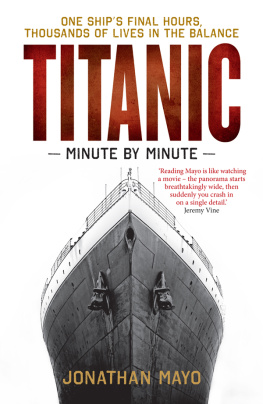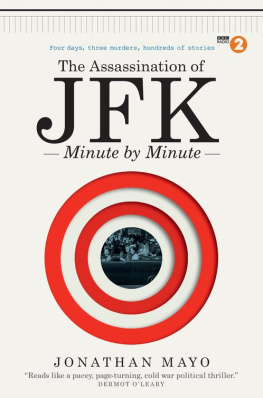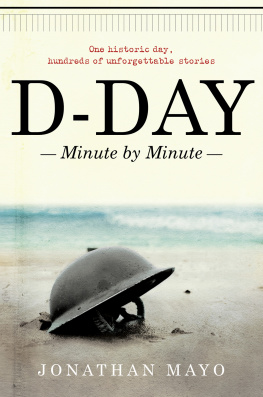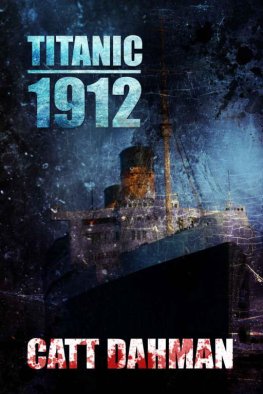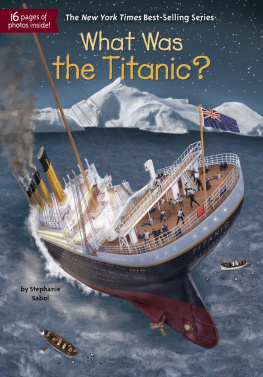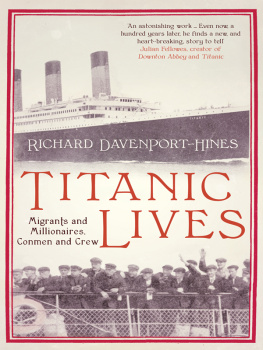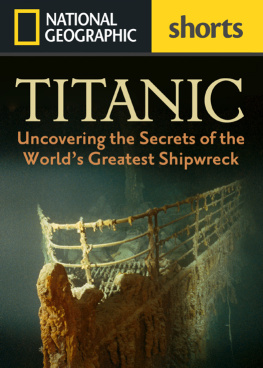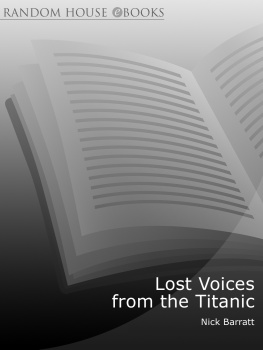
Praise for Hitlers Last Day: Minute by Minute:
Compelling. Radio Times
Beyond fascinating... this book brings to life a thousand different people in the most dramatic moment of the last century. Jeremy Vine
Mesmerisingly recreates each minute by panic-filled minute as madness engulfed the Fuhrers bunker. Daily Mail
Fascinating. The Sun
Praise for D-Day: Minute by Minute:
Studded with extraordinary detail, its the most joltingly vivid account ever written of the day the Allies gambled everything Heartbreaking and thrilling by turns. Daily Mail
The chaos, the horror and the bravery of the battlefield are all here. Daily Express
This book creates a remarkably vivid picture of one of the most important days in modern history. The Good Book Guide
Praise forThe Assassination of JFK: Minute by Minute:
Reads like a pacey, page-turning, cold war political thriller. Dermot OLeary
A blow-by-blow account of a moment that changed history The pictures come thick and fast as the tragedy unfolds and some of the images painted are painfully powerful. Radio Times
A gripping account of those blood-soaked few days in November 1963. Daily Express

For Hannah and Charlie
Acknowledgements
Titanic: Minute by Minute was originally a three-hour live radio programme for BBC Radio 2, made by TBI Media to mark the centenary of the sinking. When we came off air in the middle of the night, Tim Maltin, one of our experts, turned to me waving my hefty script. You should have turned this into a book My thanks to Tim for the suggestion that kicked off the Minute by Minute collection.
Thanks also to Rebecca Nicolson, Aurea Carpenter and Paul Bougourd at the mighty Short Books who have championed the format, and to my editor Emma Craigie who knocked the text into shape as wisely as ever.
Despite the best efforts of the media world, Phil Critchlow continues to be one of the good guys many thanks to him and his team at TBI. Bob Shennan, the controller of Radio 2, and Robert Gallagher, its commissioning editor, continue to be highly valued supporters of this way of bringing history to life.
Finally, an award of some sort should go to my wife Hannah and son Charlie (the only boy who, since the age of five, has known that pictures of the Titanic should never have smoke coming out of the fourth funnel) who havent seen as much of me over the past few months as they, and I, would have liked. If nothing else, writing a book on the sinking of the Titanic makes one grateful for ones family.
Contents

Noon, 19th April 1912. TheTitanicis pulled away by tugs from the White Star Dock at Southampton.
Introduction
At 5.47am on 22nd January 1909, 24-year-old Jack Binns, the wireless telegraph operator on the White Star Lines passenger ship the Republic, was just turning in after working all night transmitting telegrams, when he heard the distant blast of a ships foghorn. His liner, one of the finest in the White Star Lines fleet, had left New York the previous day bound for the Mediterranean, and was sailing in dense fog in busy shipping lanes 100 miles east of the coast of Massachusetts. The Republic sounded her foghorn in reply, and reversed her engines. However, the other ship, the liner Florida, New York bound with over 1000 immigrants on board, did not turn to starboard as the regulations stated but ploughed straight on.
The Florida hit the Republics side, making a huge hole in her hull, above and below the waterline. Seawater flooded her engine room. The crumpled bow of the Florida proceeded to scour the Republics main deck. Two sailors were killed instantly on the Republic and four on the Florida; half of Jack Binns wireless hut was ripped away but he survived.
Despite the damage, Binns was able to repair his apparatus and send out CQD distress signals, staying at his post for 18 hours. Binns worked for the pioneering wireless company Marconi, and CQD, which stood for all stations: distress, was their version of SOS. The White Star Lines passenger ship Baltic and about a dozen other vessels arrived in time to transfer the Republics passengers before she sank in 40 fathoms. The rescued passengers were then taken back to New York.
Jack Binns was hailed a hero and became a legend among the Marconi Companys young operators, earning the nickname CQD Binns. He wrote up his story the day after the disaster for the New York Times; a tickertape parade was held in his honour, and a silent movie was made called CQD or Saved by Wireless. Binns would later successfully sue the film company Vitagraph, claiming the actor portraying him made him look ridiculous, smiling and smoking a cigarette, and winking and making grimaces.
At the time of the sinking of the Republic, on slipway 3 in the Harland and Wolff shipyard in Belfast the same yard that had built the Republic the keel of the latest White Star Line ship, the Titanic, was being laid. The loss of the Republic did not give the Titanics designers pause for thought far from being seen as a warning, the incident only served to reinforce their confidence in their ships. After all, the White Star Lines safety record was extremely good. Since 1902 they had carried 2,179,594 passengers with only two deaths the men on the Republic.
The main conclusions drawn from the collision were that modern liners, even if seriously damaged, sink slowly, allowing plenty of time for passengers to be transferred to other ships. Also, that ships with wireless on board are able to summon help quickly. Both conclusions encouraged the idea among all shipbuilders and ship owners that lifeboats for every passenger were unnecessary. On that foggy January day off the coast of Massachusetts, the Republic had enough lifeboats for only half her passengers.
At the beginning of the 20th century, it was widely accepted that accidents happened in the fledgling technologies of the motor car and the aeroplane; for example, on the Titanic, the Ryerson family was travelling home early because their son had been killed in a car accident, and author Helen Candee because her son had been injured in a plane crash. However, liners were considered part of a reliable and long-standing seafaring tradition, constantly updated with the latest technological innovations. What happened to the Republic didnt alter the publics confidence in ocean travel.
The sinking of the Titanic is so familiar to us that its hard to imagine what a shock it must have been in April 1912. One simple, but telling, illustration of its impact is a homemade inscription on the outside wall of a house in the Norfolk Broads. Scratched neatly and deeply into the Victorian brick are the words: 14th April 1912. The Titanic
Next page
